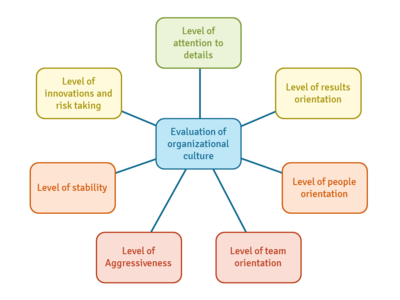Management by culture: Difference between revisions
mNo edit summary |
|||
| Line 53: | Line 53: | ||
* Willcoxson, L., & Millett, B. (2000). ''[http://eprints.usq.edu.au/14037/1/Willcoxson_Millett_AJMOB_v3n2_PV.pdf The management of organisational culture]''. Australian Journal of Management and Organisational Behaviour, 3(2), 91-99. | * Willcoxson, L., & Millett, B. (2000). ''[http://eprints.usq.edu.au/14037/1/Willcoxson_Millett_AJMOB_v3n2_PV.pdf The management of organisational culture]''. Australian Journal of Management and Organisational Behaviour, 3(2), 91-99. | ||
* Watson, T. J. (2001). ''In search of management: Culture, chaos and control in managerial [[work]]''. Cengage Learning EMEA. | * Watson, T. J. (2001). ''In search of management: Culture, chaos and control in managerial [[work]]''. Cengage Learning EMEA. | ||
* Žukauskas, P., Vveinhardt, J., and Andriukaitienė, R., (2017) ''[[https://www.intechopen.com/books/management-culture-and-corporate-social-responsibility/the-theoretical-aspect-of-management-culture-as-part-of-organizational-culture The Theoretical Aspect of Management Culture as Part of Organizational Culture]]', Management Culture and Corporate Social Responsibility | |||
[[Category:Management by...]] | [[Category:Management by...]] | ||
[[Category:Organizational culture]] | [[Category:Organizational culture]] | ||
[[pl:Zarządzanie przez kulturę organizacyjną]] | [[pl:Zarządzanie przez kulturę organizacyjną]] | ||
Revision as of 16:26, 31 August 2020
Management by culture involves influencing: technique and technology, organizational structure, human resources, ethical norms, beliefs, attitudes and behaviour of people in company. Within the system of symbols, corporate culture is a kind of language, identity of the company, dress code for employees, interior design, specific activities or its trademark.
Managing by organizational culture involves various managerial activities aimed at positive change in culture, which in turn helps to gain more customers, profits and increase in competitive advantage.
Shaping the culture of organization
Most scientists believe that creating a culture of the organization is main role of its managers. Managers must adhere to common organizational beliefs and spread them. In the first phase of the life cycle of the organization - important role plays vision and energy of leaders. In the second phase - manager may affect employees by: his own example, recruiting the right people, urging at informal meetings to perform specific behaviours. In the phase of stabilization and growth leader should grow with the organization or look for suitable successors. In the phase of transition managers and employees must unlearn behaviours that badly affect the organization and understand the need for cultural change.
Peters and Waterman have created a list of the attributes of correct organizational culture, they are: focus on the action, close contact with the customer, productivity through people, simple structure, putting business in the first place, creating a climate of tolerance.
Tools that allow the manager to influence the culture, are:
- Direct impact, that is to convince employees to adopt certain cultural patterns,
- Indirect impact, change of the procedures, regulations, distribution of facilities and equipment.
In the literature, more is said about a change of organizational culture rather than its initial formation. Below are the steps to change the organizational culture by Geert Hofstede:
- diagnosis of culture, taking into account the opinion of employees and managers,
- making strategic choices, assessment of: strengths and weaknesses of culture, compliance with the organization's strategy, opportunities, costs, benefits of the change,
- appointment of people with enthusiastic attitude to changes,
- development of structural changes,
- development of procedural changes,
- adaptation of procedures and tools of personnel management,
- monitoring of the organizational culture.
Culture of the organization should be of interest to any manager. This is because it decides on the accuracy and efficiency of working with people, the accuracy of decisions and pace of organizational development.
See also:
References
- Bates, R. (1986). The management of culture and knowledge. Hyperion Books.
- Hofstede, G., Neuijen, B., Ohayv, D. D., & Sanders, G. (1990). Measuring organizational cultures: A qualitative and quantitative study across twenty cases. Administrative science quarterly, 286-316.
- Hofstede, G. (1993). Cultural constraints in management theories. The Academy of Management Executive, 7(1), 81-94.
- Schein, E. H. (1988). Organizational culture.
- Willcoxson, L., & Millett, B. (2000). The management of organisational culture. Australian Journal of Management and Organisational Behaviour, 3(2), 91-99.
- Watson, T. J. (2001). In search of management: Culture, chaos and control in managerial work. Cengage Learning EMEA.
- Žukauskas, P., Vveinhardt, J., and Andriukaitienė, R., (2017) [The Theoretical Aspect of Management Culture as Part of Organizational Culture]', Management Culture and Corporate Social Responsibility
